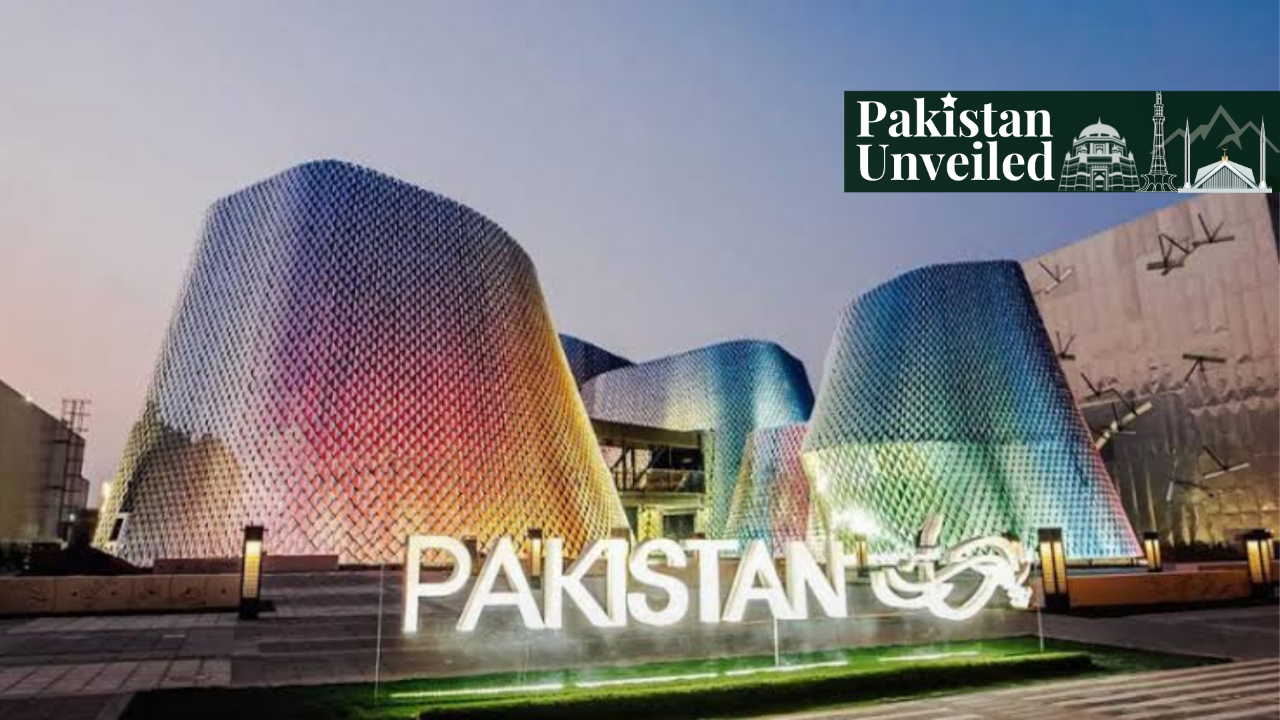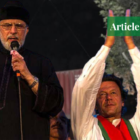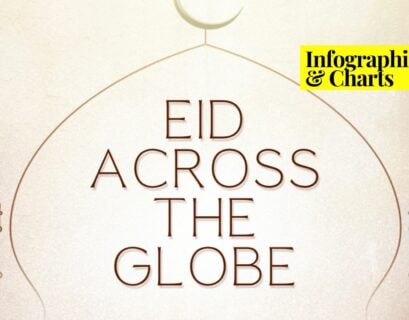Ms. Palwasha Khan is a student of International Relations at the National Defence University Islamabad.
Expo 2020 Dubai
Expo 2020 Dubai is a global exhibition being held in the United Arab Emirates. The expo is the first exhibition to be taking place in the Middle East; the first to be hosted by an Arab country as well. This international event is cosmic in terms of its size, scale, duration, and number of visitors. The central theme of the expo is ‘Connecting Minds, Creating the Future’ that aims to connect ideas, people, and countries and engage actors from all over the world under a unified platform to spur and celebrate global innovations and growth internationally.
Moreover, the great expo signifies a worldwide gathering of 192 countries, designed to honor human brilliance and achievements in terms of art, culture, science and technology, innovation, and invention. The duration of the expo is six months, with 25 million enlivened visitors projected to arrive in Dubai and spectate the exhibition.
During the exhibition, visitors will not only experience Emirati hospitality but also the UAE’s ideals of collaboration, inclusion, and tolerance. Each country has set up its own pavilion depicting its distinct culture and technical innovations. There are 192 pavilions with five pavilions at the center of the site.
Pavilions of China, Africa, and the Pacific are the largest ones in the expo. Interestingly, there are three subthemes of the expo, namely opportunity, mobility, and sustainability, and every country’s designated architect has created its pavilion according to one of those themes.
Opportunity as a subtheme translates to the potential for the masses to shape the future; mobility means devising smarter and productive tools to intensify movement among the people, commodities, and ideas, both physically and virtually, while appreciating and living in harmony with the environment is what sustainability entails.
Interested visitors can purchase tickets through the official Expo 2020 website, through a chain of authorized ticket resellers affiliated with Expo 2020 and at the entrance of the expo. A single-day pass, multi-day pass (unlimited entries for 30 consecutive days from the first day of use), season pass and premium experience (both valid for unlimited entries for the entire 6 months) are all available as standard tickets.
The cost of these tickets varies depending on the experiences and services provided. A single-day pass adult (18-59 years) costs AED 120 (USD 32), while a season pass costs AED 595 (USD 161). Visitors will get a once in a lifetime experience including live shows and performances by world-famous artists, daily parades, display of futuristic technologies and confounding architecture, and hundreds of food and beverage outlets serving delectable cuisines.
Pakistan’s ‘Hypnotic’ Pavilion
Pakistan has chosen the theme of ‘The Hidden Treasure’ at the Expo 2020 Dubai. The country’s pavilion has been all over the news for its unique, prodigious, and sensational architecture and planning. Pakistan’s culture, history, landscape, religious and ethnic diversity, and wildlife are nobly depicted inside the pavilion.
The pavilion’s ‘hypnotic design’ façade was created by Mr. Rashid Rana, patently representing multifaceted sides of Pakistan. Mr. Shahid Abdulla, an architect also lends his hand in designing the remarkable and flamboyant façade hinged to the notion of changing the country’s image by showcasing it from a new perspective.
An excellent team of artists including craftsmen, curators, digital technologists, filmmakers, musicians, photographers, videographers, and visual artists have worked tirelessly to bring Pakistan’s rich culture, history, and topography to life.
Discovering the Hidden Treasures of Pakistan at the Dubai Expo
Tour of the pavilion begins with a pristine hand-drawn timeline stretching from 7000 BC to Pakistan’s independence in 1947. Visual artist, Naveed Sadiq is the genius behind contouring the timeline. The timeline is followed by visuals of the history displayed on a widescreen with Master Allah Ditta’s replicas of Harrapan figures and artefacts on wall shelves to the side.
Visitors are roused as they espy a corridor leading to ‘Sheesh Mahal: Pathway of Mirrors’ of Lahore, designed by Ustad Naqqash Rafaqat Ali. A narrow corridor then takes visitors on an enthralling journey doused in light and shadow, and hypnotizing visuals are evident on screens through the Sheesh Mahal installation; largely depicting the revival of ayina-kari (mirror mosaic) in the modern era.
Mr. Abrar Qazi, a digital technologist has created the Sheesh Mahal walkway. From here, visitors walk further and witness Mohana’s very own exquisite wooden boat made by the Mohana community as per the directives of Ustad Muhammad Hussain Mughal and Muhammad Rahib Mirani.
Moreover, spectators are transported to visuals of Pakistan’s spectacular landscapes obvious on a huge screen; the installations of wood and textile portray the two great primeval communities of Mohana and Kalasha. Majority of the landscapes presented entice visitors with never-seen-before places in Pakistan, hence the hidden treasure.
A somber path leads visitors to the pivot of the pavilion where the visual artist, Affan Baghpati, has created an outstanding installation inspired by minarets in Pakistan’s sacred spaces. The site-specific installation symbolizes “an ambience of connectivity, embracement and consecrated nostalgia”.
To accentuate the idea of unanimity, various substructures with shards of domes, cones, prisms, and colossal visual motifs of ‘Chaand-Taara’ and ‘Surmadani Phooljaal’ have been displayed. Moreover, spews of light filters through carved wooden grids and minarets and blazingly painted fresco-art panels inspired by the Wazir Khan Mosque of Lahore embellish the walls.
This space of pavilion commemorates the spirit of coexistence in Pakistan’s mosques, churches, gurudwaras, shrines and temples, all captured by renowned and insanely talented filmmaker Jami and his amazing team at Azad Films. An installation is solely dedicated to the ‘Pink Salt Rock’ of the Salt Range in the Potohar Plateau; it highlights economic opportunity under the theme of ‘Land of Opportunity’.
One of the most important installations features Prime Minister Mr. Imran Khan’s initiative of ‘Billion Tree Tsunami Project’. The purpose of the art installation is to highlight how Pakistan is curbing climate change and promoting climate sustainability. Mr. Abrar Qazi has developed a walkway for this installation as well.
Visitors pass through a virtual forest with green-colored laser light rays that simulate rain. The sound of wildlife in the background give the visitors a sense of reconnection with nature. The Pakistani pavilion’s journey concludes with a souvenir shop brimming art and craft works unique to Pakistani culture on one side, a café by the name of ‘The Dhaaba’ with the country’s authentic and flavorsome cuisine for famished visitors on the other side.
The soundtrack ‘Lala-e-Sehrai’ (Flower of the Desert) of the Pakistani pavilion is what makes the journey so astonishing and memorable. The music maestro Mr. Rohail Hyaat singlehandedly produced the official 14-minute-long soundtrack, carrying visitors through a trip from classical to folk and then qawwali.
Conclusion
Despite the challenges, Pakistan’s pavilion with an amazing façade, has proven to be a game-changer for the country’s image and has instilled pride in Pakistanis. On the first day, 8,000 people from across the world were given the opportunity to learn about the country’s rich history, culture, and beauty at the Dubai Expo. The Pakistani curations look incredible enough for us to genuinely consider visiting Dubai just to see the pavilion. It is a brilliant glimpse of the union of past cultures, heritage, and diversity brought to the forefront.
If you want to submit your articles and/or research papers, please check the Submissions page.
The views and opinions expressed in this article/paper are the author’s own and do not necessarily reflect the editorial position of Paradigm Shift.



















